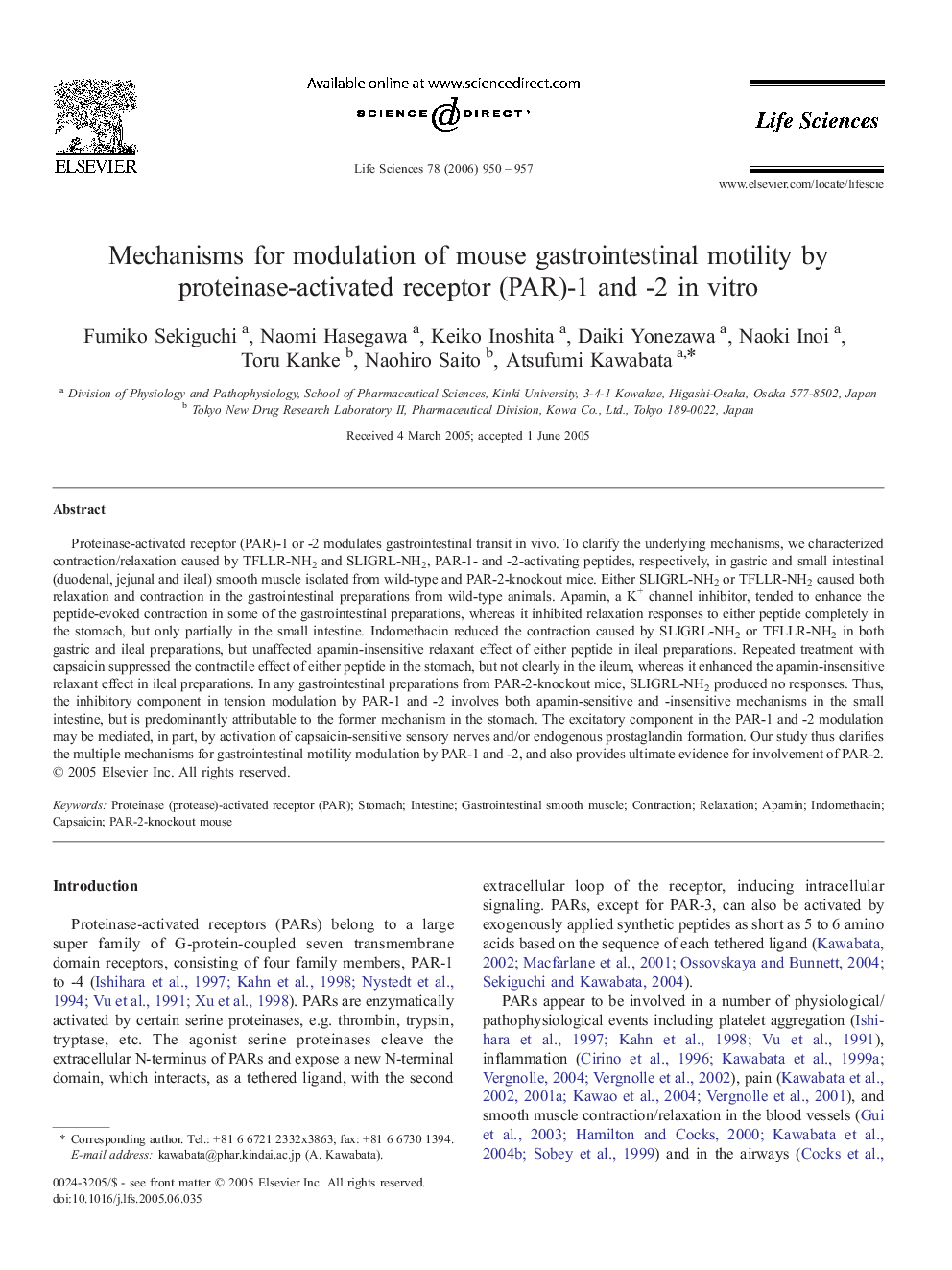| کد مقاله | کد نشریه | سال انتشار | مقاله انگلیسی | نسخه تمام متن |
|---|---|---|---|---|
| 2554530 | 1124974 | 2006 | 8 صفحه PDF | دانلود رایگان |

Proteinase-activated receptor (PAR)-1 or -2 modulates gastrointestinal transit in vivo. To clarify the underlying mechanisms, we characterized contraction/relaxation caused by TFLLR-NH2 and SLIGRL-NH2, PAR-1- and -2-activating peptides, respectively, in gastric and small intestinal (duodenal, jejunal and ileal) smooth muscle isolated from wild-type and PAR-2-knockout mice. Either SLIGRL-NH2 or TFLLR-NH2 caused both relaxation and contraction in the gastrointestinal preparations from wild-type animals. Apamin, a K+ channel inhibitor, tended to enhance the peptide-evoked contraction in some of the gastrointestinal preparations, whereas it inhibited relaxation responses to either peptide completely in the stomach, but only partially in the small intestine. Indomethacin reduced the contraction caused by SLIGRL-NH2 or TFLLR-NH2 in both gastric and ileal preparations, but unaffected apamin-insensitive relaxant effect of either peptide in ileal preparations. Repeated treatment with capsaicin suppressed the contractile effect of either peptide in the stomach, but not clearly in the ileum, whereas it enhanced the apamin-insensitive relaxant effect in ileal preparations. In any gastrointestinal preparations from PAR-2-knockout mice, SLIGRL-NH2 produced no responses. Thus, the inhibitory component in tension modulation by PAR-1 and -2 involves both apamin-sensitive and -insensitive mechanisms in the small intestine, but is predominantly attributable to the former mechanism in the stomach. The excitatory component in the PAR-1 and -2 modulation may be mediated, in part, by activation of capsaicin-sensitive sensory nerves and/or endogenous prostaglandin formation. Our study thus clarifies the multiple mechanisms for gastrointestinal motility modulation by PAR-1 and -2, and also provides ultimate evidence for involvement of PAR-2.
Journal: Life Sciences - Volume 78, Issue 9, 25 January 2006, Pages 950–957